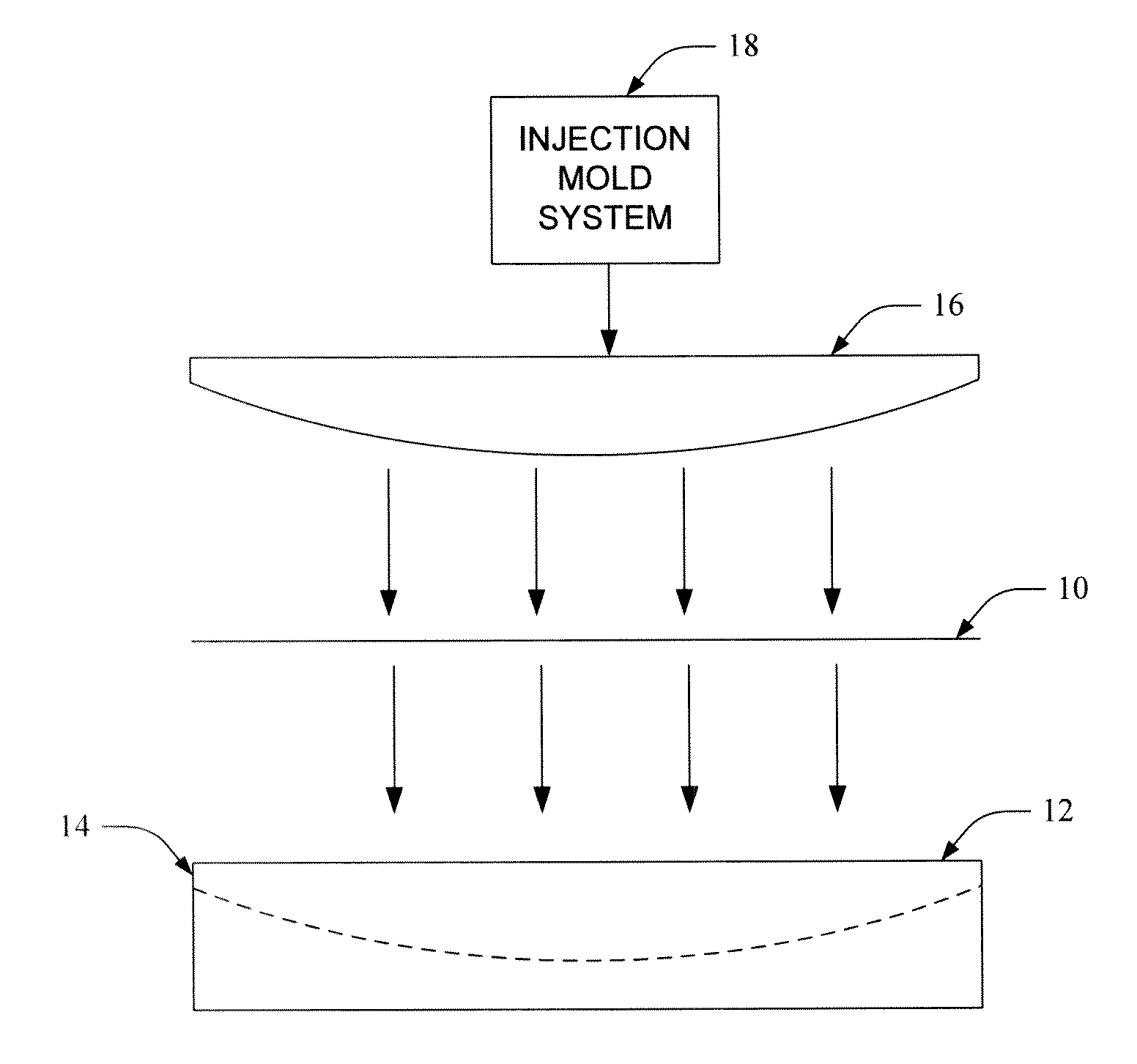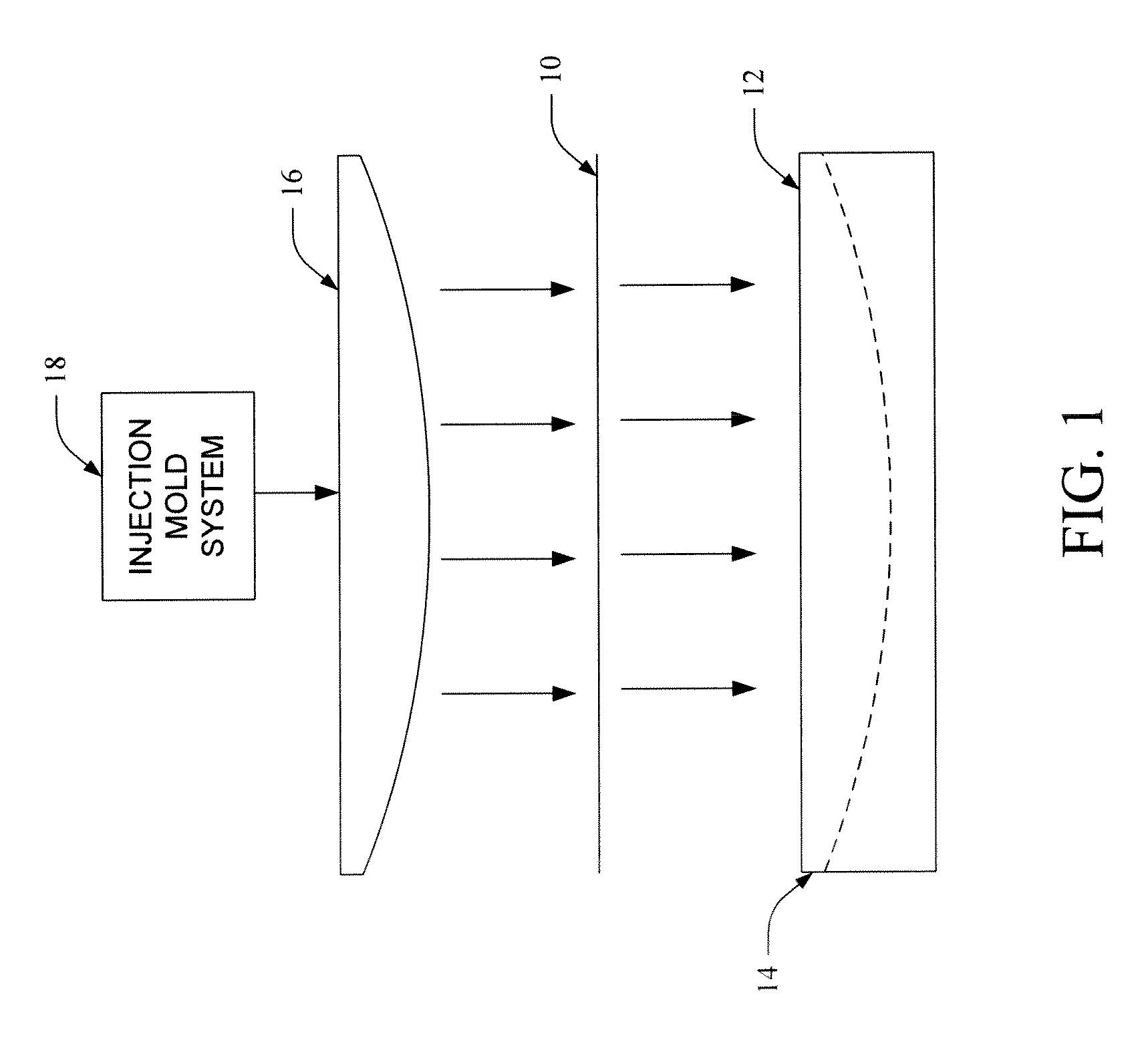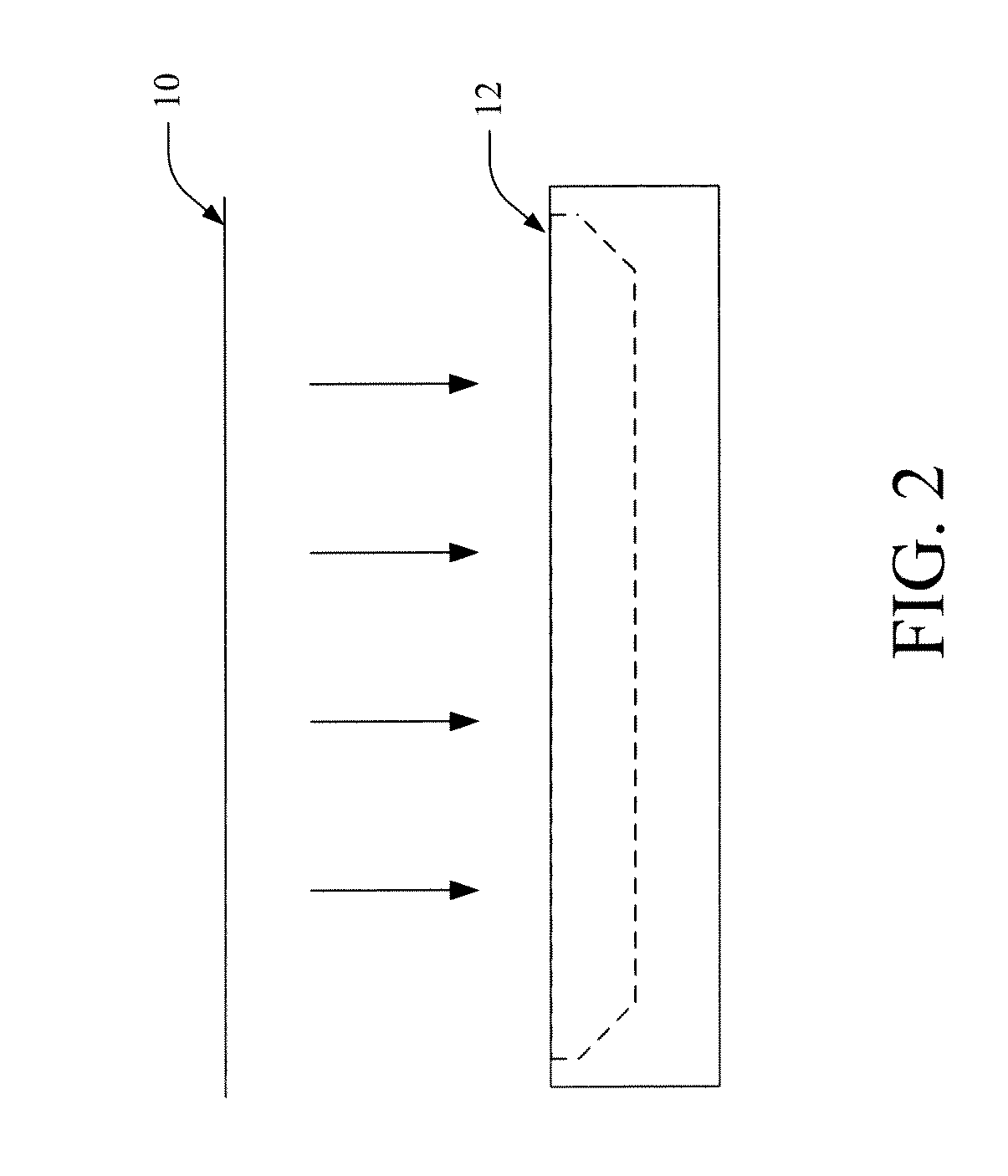Film insert molding (FIM) on a 3D shape
a 3d shape and film insert technology, applied in the field of film insert molding, can solve the problems of preventing the ability to over-mold the film on the outer side of the shell, affecting the ability to over-mold the film, and affecting the effect of the film insert, so as to prevent the film insert from wrinkling
- Summary
- Abstract
- Description
- Claims
- Application Information
AI Technical Summary
Benefits of technology
Problems solved by technology
Method used
Image
Examples
Embodiment Construction
[0011]When manufacturing traffic light lenses or shells, a hard-coated shell surface is desirable for scratch resistance and to protect the shell plastic or polymer from degradation due to ultraviolet (UV) light. As the cost of the traffic light decreases, the cost of hard coating becomes significant. For instance, the cost of hard coating on an 8-inch traffic light shell may be approximately 10% of the total cost of the light. To reduce this cost, systems and methods are described for over-molding a thin film to generate a hard-coated surface on a spherical shape. While traditional methods involve two suppliers, such as a molder (e.g., a one-day process) and a coater (e.g., a 2-3 weeks' process), the subject innovation involves only a molding process, thereby reducing the cost associated with hard-coating by approximately 50% or more.
[0012]With reference to FIG. 1, a pre-cut, non-planar film insert 10 is shown, which is planar or three-dimensional (3D) in shape to fit a mold 12 int...
PUM
| Property | Measurement | Unit |
|---|---|---|
| Diameter | aaaaa | aaaaa |
| Electrical resistance | aaaaa | aaaaa |
| Flexibility | aaaaa | aaaaa |
Abstract
Description
Claims
Application Information
 Login to View More
Login to View More - R&D
- Intellectual Property
- Life Sciences
- Materials
- Tech Scout
- Unparalleled Data Quality
- Higher Quality Content
- 60% Fewer Hallucinations
Browse by: Latest US Patents, China's latest patents, Technical Efficacy Thesaurus, Application Domain, Technology Topic, Popular Technical Reports.
© 2025 PatSnap. All rights reserved.Legal|Privacy policy|Modern Slavery Act Transparency Statement|Sitemap|About US| Contact US: help@patsnap.com



